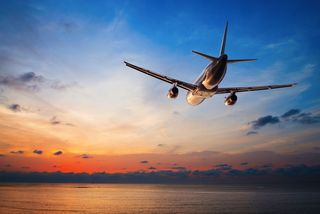Pilot's Heart Attack: How Often Do Flight Emergencies Happen?

A pilot's heart attack turned a United Airlines flight to Seattle into a dramatic scene where passengers attempted to save the pilot's life, and one helped the co-pilot make an emergency landing in Boise, Idaho. The pilot died at the hospital, according to news reports.
A midair heart attack is a scary scenario for sure, but the incident last night (Sept. 26) was unusual -- heart attacks on flights are rare, and deaths are even rarer.
A study of medical emergencies on five major airlines over a nearly three-year period showed that, of the 12,000 passengers who experienced some form of medical emergency during a flight, 0.3 percent (38 people) suffered cardiac arrest, in which the heart stops. The number who died over the study period was 31, according to the study, which was published in May in the New England Journal of Medicine.
About 920 other people (about 8 percent) showed symptoms of a heart problem such as chest pain, palpitations or pacemaker concerns. Of that total, 162 of them were admitted to the hospital after the plane landed, and all survived. [13 Oddest Medical Cases]
In fact, the most common emergency that strikes people in the air is syncope, which is a feeling of lightheadedness, dizziness or passing out. Respiratory problems, and nausea and vomiting, were the next most common problems, according to the study.
When the United pilot fell unconscious, a crew member made an announcement asking if anyone on board was a physician, passengers told a local news channel.
The study showed that surprisingly, there's often a doctor onboard. In half of in-flight medical emergencies studied, a passenger physician intervened. Onboard the United flight, one doctor and two military personnel tried to save the pilot's life by giving him chest compressions, according to news reports.
Sign up for the Live Science daily newsletter now
Get the world’s most fascinating discoveries delivered straight to your inbox.
The Federal Aviation Administration requires every flight to be equipped with an emergency medical kit, and a defibrillator that can be used when a passenger shows symptoms of heart attack or irregular heartbeat. Many airlines communicate with ground-based medical practitioners when emergencies arise.
The United plane completed an emergency landing less than 15 minutes after the crew contacted the Boise airport, according to news reports. The pilot, Henry Skillern, 63, of Humble, Texas, was taken to the hospital by paramedics who met the plane on the runway.
The most common reason planes are forced to land early is when a passenger is suspected of having a stroke or a heart attack, which calls for immediate medical attention, the study found. For such cases, experts advise pilots to consider promptly landing the aircraft, if possible.
However, in the cases studied, only about 7 percent of emergencies resulted in an aircraft's diversion and landing. Email Bahar Gholipour. Follow LiveScience @livescience, Facebook & Google+. Original article on LiveScience.

